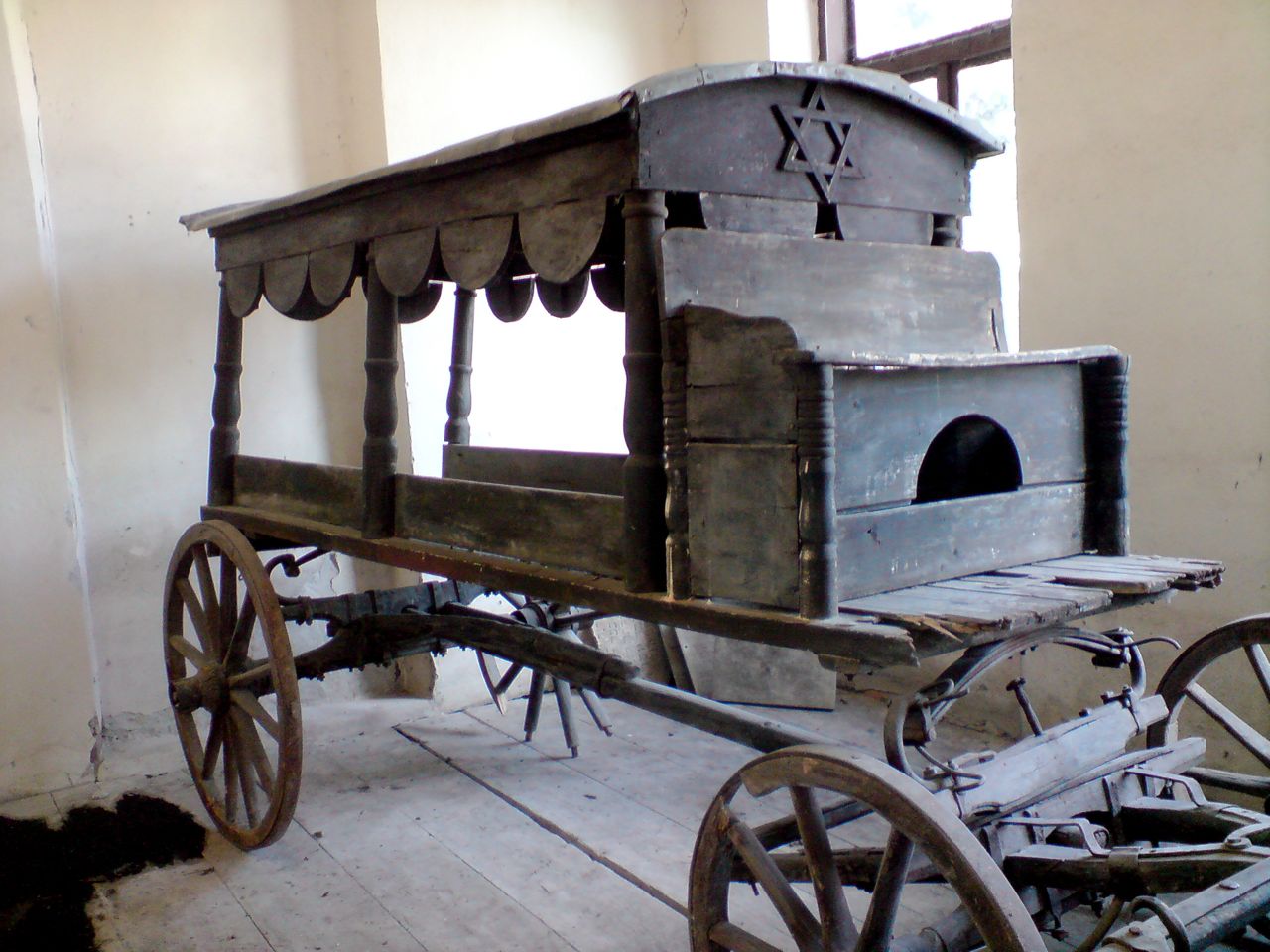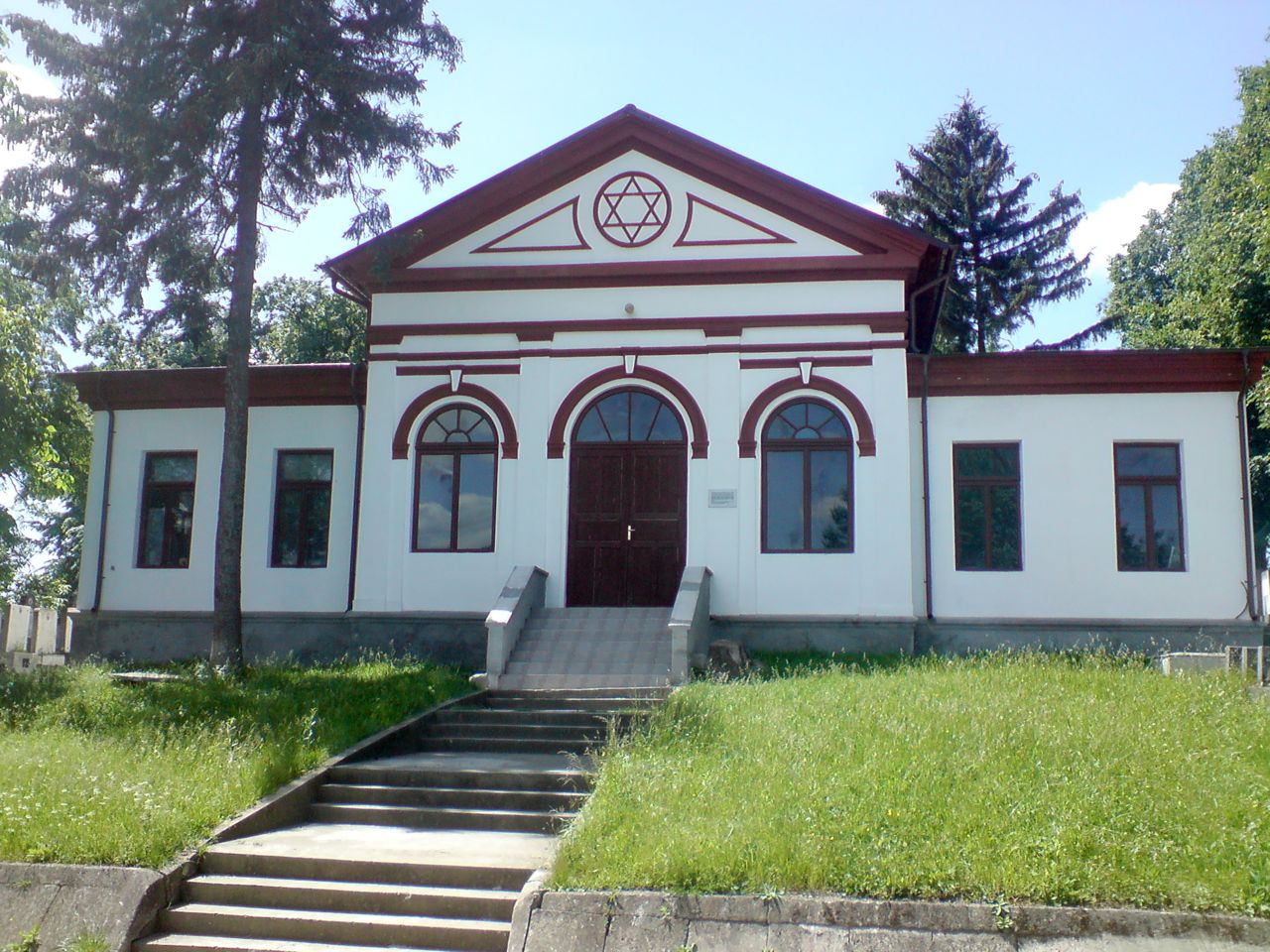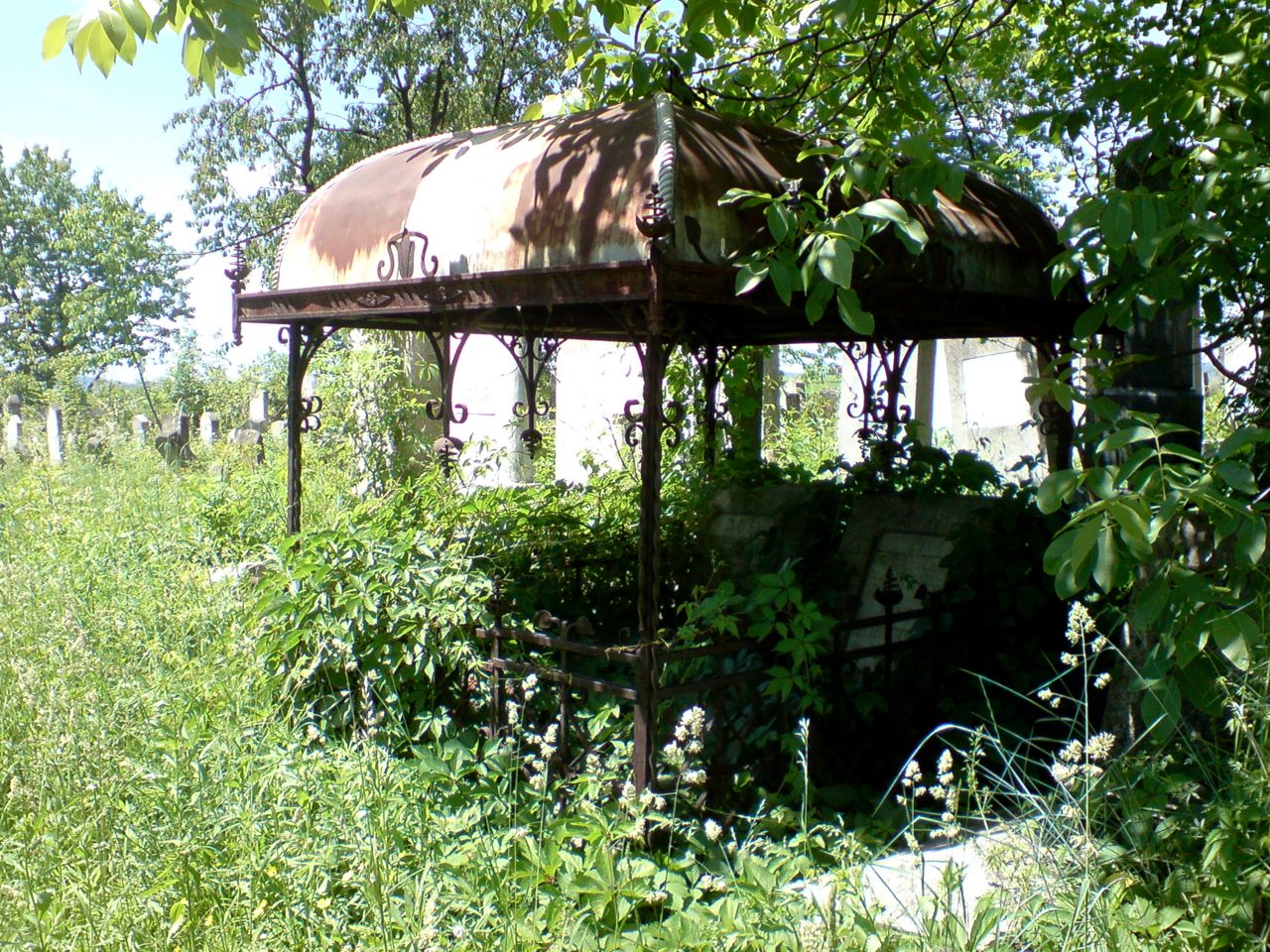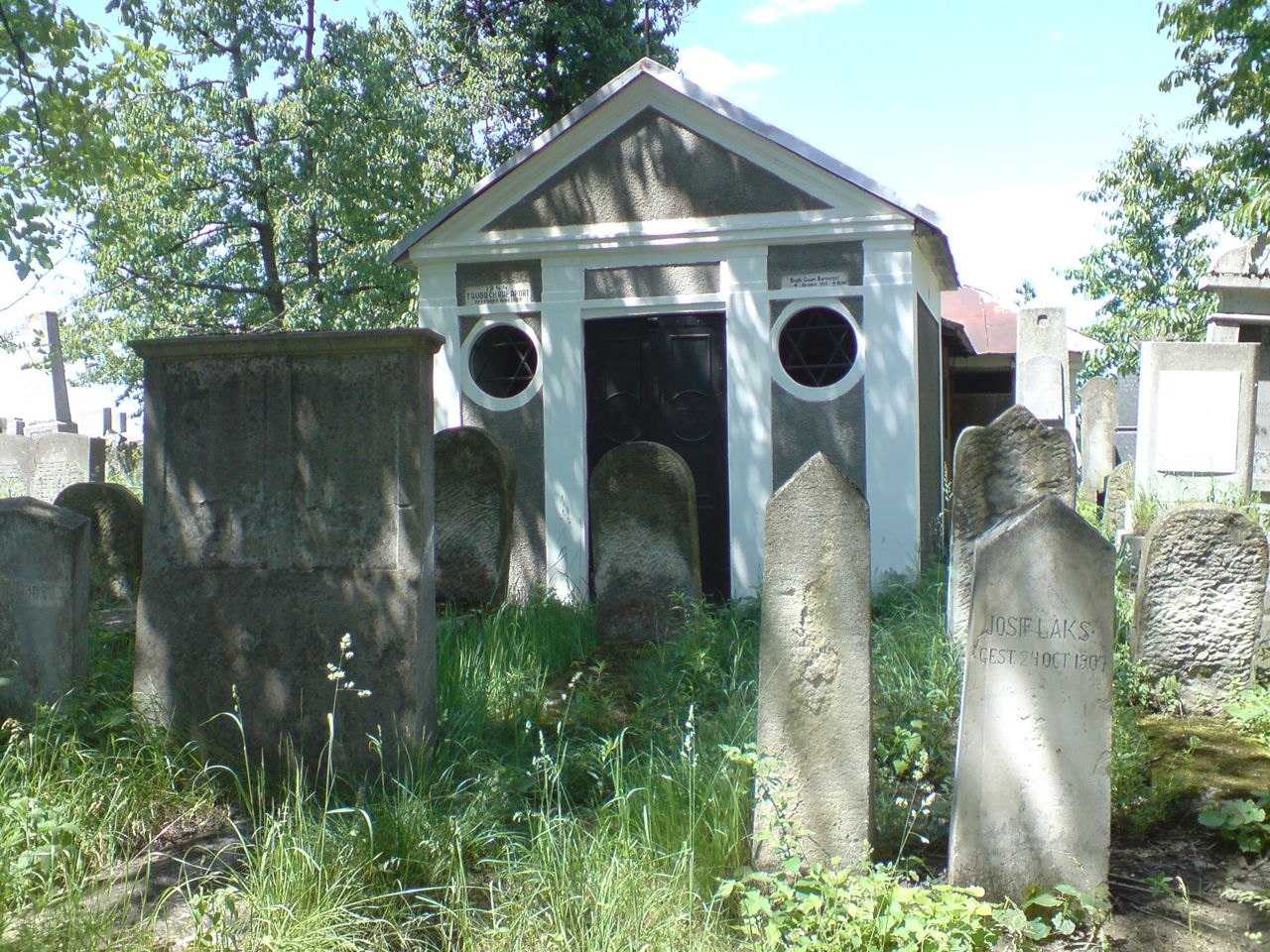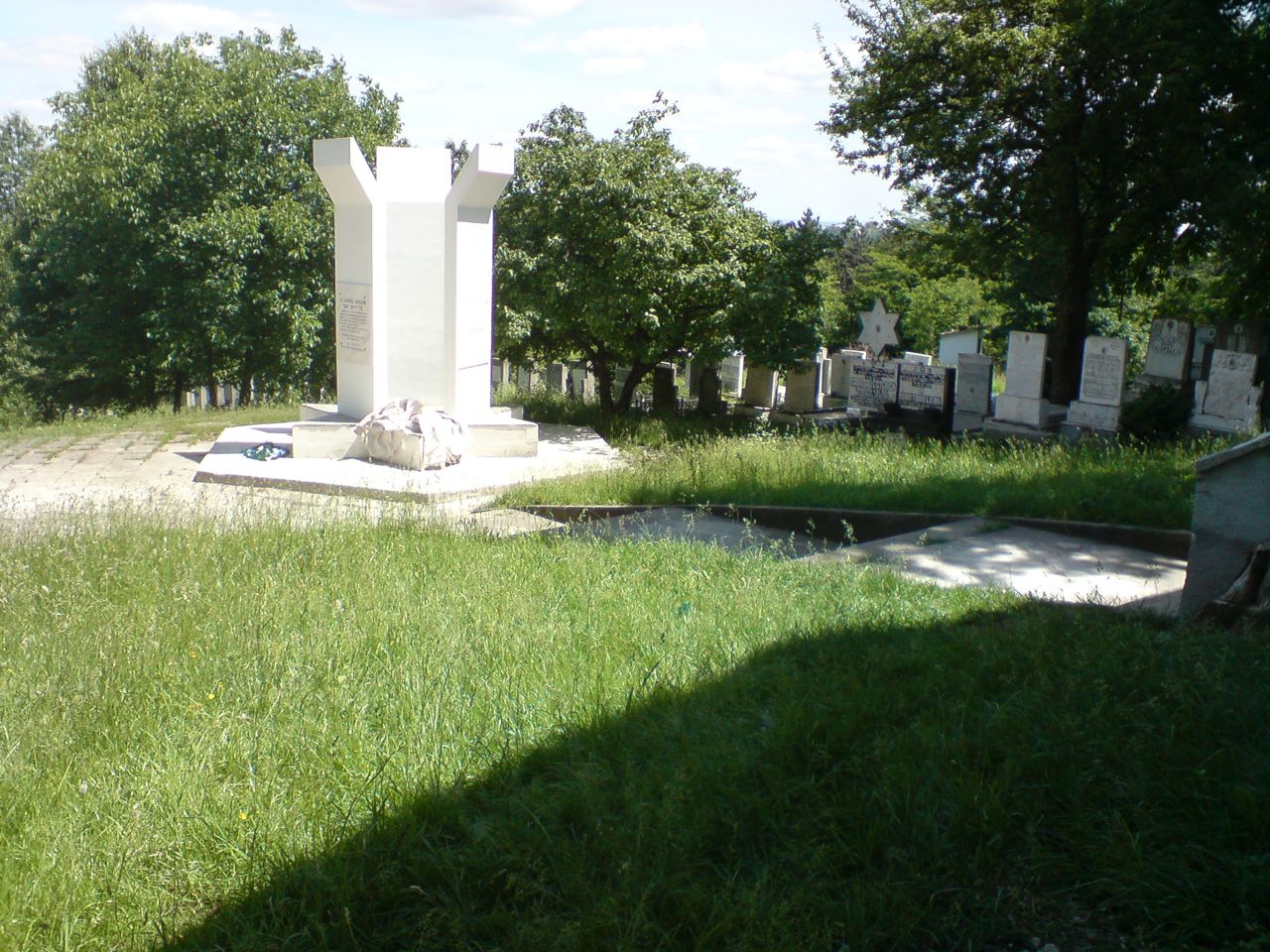 Alternate names: Dorohoi [Rom], Dorokhoy, Dorohoiu, דורוהוי [Hebr]. 47°57' N, 26°24' E, NE Romania, 19 miles NW of Botoșani (Botoshan) on the right bank of the Jijia River, which broadens into a lake on the north.Dorohoi market for the timber and farm produce of the north Moldavian highlands attracted merchants from neighboring states for its great fair, held on June 12. Jews first settled in Dorohoi in the 17th century with a Jewish Guild under Moldavia. Jews suffered here during World War I. Jewish population: .Jewish population: 6,804 (in 1899), 5,389 (in 1941). 600 Jewish families in 1803; 3,031 people in 1859 (roughly half of the population); 6,804 in 1899 (more than half of the population); .6,804 (in 1899), 5,800 in 1930s and 5,389 (in 1941. The Jewish population actually increased after the Holocaust as a result of refugees settling there. In 1947, 7,600 Jews livied in Dorohoi. Following the establishment of Israel, the Jewish population of the Dorohoi steadily decreased. Jewish population: 1956 with 2,753 Jews; 1966 with 1,013; and 49 in 2000i.
Alternate names: Dorohoi [Rom], Dorokhoy, Dorohoiu, דורוהוי [Hebr]. 47°57' N, 26°24' E, NE Romania, 19 miles NW of Botoșani (Botoshan) on the right bank of the Jijia River, which broadens into a lake on the north.Dorohoi market for the timber and farm produce of the north Moldavian highlands attracted merchants from neighboring states for its great fair, held on June 12. Jews first settled in Dorohoi in the 17th century with a Jewish Guild under Moldavia. Jews suffered here during World War I. Jewish population: .Jewish population: 6,804 (in 1899), 5,389 (in 1941). 600 Jewish families in 1803; 3,031 people in 1859 (roughly half of the population); 6,804 in 1899 (more than half of the population); .6,804 (in 1899), 5,800 in 1930s and 5,389 (in 1941. The Jewish population actually increased after the Holocaust as a result of refugees settling there. In 1947, 7,600 Jews livied in Dorohoi. Following the establishment of Israel, the Jewish population of the Dorohoi steadily decreased. Jewish population: 1956 with 2,753 Jews; 1966 with 1,013; and 49 in 2000i.
- Dorot shel yahadut ve-tsiyonut Dorohoi, Saveni, Mihaileni, Darabani, Herta, Radauti-Prut
(Kiryat Bialik, 1992-2000) - Pinkas ha-kehilot; entsiklopediya shel ha-yishuvim le-min hivasdam ve-ad le-aher shoat milhemet ha-olam ha-sheniya: Romania vol. 1
(Jerusalem, 1969) - Encyclopedia of Jewish Life (2001), pp. 323-324: "Dorohoi".
- Pinkas HaKehilot, Romania, Vol. 1 (1969), pp. 104-110: "Dorohoi".
- JewishGen Romanian SIG
- Wikipedia [Mar 2014]
- YIVO Encyclopedia. [Mar 2014]
- "Jewish Dorohoi", 2008Jewish Encyclopedia. [Mar 2014]
This email address is being protected from spambots. You need JavaScript enabled to view it.. Like Shells on a Shore. Projekt 36, Bern, Switzerland, 2010. To order, contact Mr. Geissbuhler. history and photographs. [December 2010]
abandoned sites Jewish Heritage Travel: A Guide to East-Central Europe by Ruth Ellen Gruber- New York: John Wiley & Sons, Inc., 1992- 201, 216-217.
- Czernowitz Bukovina [Mar 2014]
- Jewish Bukovina [Mar 2014]
See also: Mogilev, Ukraine.
Dorohoi Pogrom. photo of Holocaust Memorial. [Mar 2014]
CEMETERY:
Town and cemetery history and photos. [Mar 2014]
DOROHOI (I): US Commission No. _
Located at 47°57' 26°24' or 26°27' 47°56' in Botosani county, Moldavia region. Alternate name: Dorohoiu and Dorokhoy at b-dul Victoriei no. 110, 3 km from Suceava. Present town population is 25,000-100,000 with 1,000-5,000 Jews.
- Local Authority: Mayor Gherasim Vasile, str. Dumitru Furtuna no. 1, Dorohoi, Botosani judet.. Phone: 615670.
- Religious Authority: The Jewish Community of Botosani, Soseaua Nationala no. 220. Phone: 514659. Jewish Community of Dorohoi, str. Spiru Haret no. 95. Phone: 611797.
- Regional Authority: The Federation of the Jewish Communities of Romania, Sf. Vineri str., no. 9-11, sector 3, Bucharest, Romania.
- Interested: "A.D. Xenopol" Institute of History, Lascar Catargi str., no. 15, 6400- Iasi (Iasi judet), Romania. Tel. 032/212614; e-mail: This email address is being protected from spambots. You need JavaScript enabled to view it.. Director: Alexandru Zub.
- Caretaker and keyholder: Cretu Marcel, b-dul Victoriei no. 110, Dorohoi, Botosani judet
The Census from 1821 registered 399 Jewish families, 1831 Census registered 446 Jewish families. The 1852 Census registered 1197 Jewish inhabitants. The 1930 Census registered 5788 Jewish inhabitants. Between June and July 1944, many Jewish families were deported in Oltenia. Prominent residents include Matatiahu Fridman, Avraham Iaacov, Mose Tvi ben Israel, Haim Taubes, Iosef ben Eliezer Wolf, Dov Ber Drimer (1889-1929)-scholar rabbi and Carol Drimer, writer, killed in 1941 Iasi pogrom. This Jewish cemetery was established in the 18th century. The last known Jewish burial in cemetery was in 19th century.
The unlandmarked Conservative cemetery is 1 km. from the congregation that used it. The isolated flat urban land has no sign, but has Jewish symbols on gate or wall. Reached by turning directly off a public road, access is open with permission. A continuous masonry wall and a gate that locks surround.
The pre- and post-WWII size is 220 m X 50 m. 100 to 500 tombstones are visible with 1 to 20 are not in original location and 50% - 75% of the tombstones broken or toppled. Vegetation overgrowth is a seasonal problem, preventing access. Water drainage is good all year.
Tombstones date from the 19th century. The marble, limestone, and sandstone tombstones are rough stones or boulders, flat shaped stones, finely smoothed and inscribed stones, and flat stones with carved relief decoration. Some have portraits on the stones. Inscriptions are in Hebrew.
The national Jewish community owns the property used for agricultural purposes. Adjacent properties are agricultural and residential. The boundaries are smaller due to a housing development. Rarely, private visitors (Jewish or non-Jewish) stop.
The never vandalized cemetery has no maintenance, but has a regular unpaid caretaker.
There is a preburial house with wall inscriptions. Security, weather erosion, pollution, and vegetation are slight threats. Incompatible nearby development is a serious threat. A private house is being built.
Lucian Nastasa, Clinicilor str., no. 19, Cluj, Romania, tel. 064/190107. Email: This email address is being protected from spambots. You need JavaScript enabled to view it. completed the survey on July 21, 2000 using the following documentation:
- Leonida Colescu, Analiza rezultatelor recensamîntului general al populatiei Romaniei de la 1899, cu o prefată de Sabin Manuila, Bucuresti, Institutul de statistica, 1944.
- I.M. Dinescu, Fiii neamului de la 1859 la 1915. Statistica sociala pe întelesul tuturora, Iasi, Institutul de Arte Grafice N.V.Stefaniu, 1920.
- Pinkas Hakehillot, Encyclopedia of Jewish Communities Romania, I-II, Jerusalem, 1980.
- D.Ivanescu, Populatia evreiască din orasele si tîrgurile Moldovei între 1774-1832 , în "Studia et acta historiae iudaeorum Romaniae", II, Bucuresti, Edit.Hasefer, 1997, p. 59-65.
- I.Kara, Inscriptii funerare ebraice din judetul Botosani, în "Memoria Antiquitatis", II, 1970, p. 523-531.
- George I. Lahovari, Marele dictionar geografic al Romaniei, 5 vol., Bucuresti, Edit.Socec, 1899.
- Marius Mircu, Pogromurile din Bucovina si Dorohoi, Bucuresti, Edit.Glob, 1945.
- E.Schwarzfeld, Din istoria evreilor: împopularea, reîmpopularea si întemeierea tîrgurilor si tîrgusoarelor în Moldova, Bucuresti, 1894.
- N.Sutu, Notiti statistice asupra Moldaviei, Iasi, 1852.
He visited July 23, 200 and interviewed Cretu Marcel, b-dul Victoriei no. 110, Dorohoi, Botosani judet. [June 2002]
DOROHOI (II): (Botosani judet) US Commission No. _
The cemetery is locate at str. 1 Decembrie 1918 no. 55. See Dorohoi I for town details.
Caretaker with key: Rudisteanu Ilie, str. 1 Decembrie 1918, Dorohoi, Botosani judet
This Jewish cemetery was established in the 19th century. The last known Jewish burial in cemetery was at the end of 19th century or was Sept.9, 1999 (Leibovici Paul). The unlandmarked Conservative cemetery was 1.5 km from the congregation that used it.
The isolated urban flat land has no sign or marker. Reached by turning directly off a public road, access is open with permission. A continuous masonry wall and a gate that locks surround the site.
The pre- and post-WWII size is 300 m X 400 m. More than 5,000 graves are visible in the cemetery. 1 to 20 are not in original location. Vegetation overgrowth in the cemetery is not a problem. Water drainage is good all year. No special sections. Tombstones date from the 19th and 20th centuries.
The rough stones or boulders, flat shaped stones, finely smoothed and inscribed stones, and flat stones with carved relief decoration., double tombstones, sculpted tombstones, and multistone monuments with iron decorations or lettering, with other metallic elements, portraits on stones, and/or with metal fences around graves. Inscriptions are in Hebrew, Yiddish, German, and Romanian. The cemetery contains special memorial monuments to Holocaust victims, pogrom victims, and Jewish soldiers. The cemetery contains a marked mass grave.
The national Jewish community owns the property now is used for Jewish cemetery purposes only. Adjacent properties are residential. Compared to 1939, the cemetery boundaries enclose the same area. Frequently, organized Jewish group tours or pilgrimage groups, organized individual tours, private visitors (Jewish or non-Jewish), and local residents visit the site.
The never vandalized cemetery maintenance has been re-erection of stones and cleaning and patching broken stones. Jewish individuals abroad and Jewish groups abroad are responsible for the maintenance done in 1998 and 1999. The Jewish Community of Dorohoi pays the regular caretaker: 5 $. There is a preburial house has a tahara (table), a catafalque, and wall inscriptions. Weather erosion, pollution, and vegetation are slight threats.
Lucian Nastasa, Clinicilor str., no. 19, Cluj, Romania, tel. 064/190107. Email: This email address is being protected from spambots. You need JavaScript enabled to view it. completed the survey on July 25, 2000 using the following documentation:
- Leonida Colescu, Analiza rezultatelor recensamîntului general al populatiei Romaniei de la 1899, cu o prefată de Sabin Manuila, Bucuresti, Institutul de statistica, 1944.
- I.M. Dinescu, Fiii neamului de la 1859 la 1915. Statistica sociala pe întelesul tuturora, Iasi, Institutul de Arte Grafice N.V.Stefaniu, 1920.
- Pinkas Hakehillot, Encyclopedia of Jewish Communities Romania, I-II, Jerusalem, 1980.
- D. Ivanescu, Populatia evreiască din orasele si tîrgurile Moldovei între 1774-1832 , în "Studia et acta historiae iudaeorum Romaniae", II, Bucuresti, Edit.Hasefer, 1997, p. 59-65.
- I. Kara, Inscriptii funerare ebraice din judetul Botosani, în "Memoria Antiquitatis", II, 1970, p. 523-531.
- George I. Lahovari, Marele dictionar geografic al Romaniei, 5 vol., Bucuresti, Edit.Socec, 1899.
- Marius Mircu, Pogromurile din Bucovina si Dorohoi, Bucuresti, Edit.Glob, 1945.
- E.Schwarzfeld, Din istoria evreilor: împopularea, reîmpopularea si întemeierea tîrgurilor si tîrgusoarelor în Moldova, Bucuresti, 1894.
- N.Sutu, Notiti statistice asupra Moldaviei, Iasi, 1852.
He visited July 23, 2000 and interviewed Rudisteanu Ilie, str. 1 Decembrie 1918, Dorohoi, Botosani judet. [June 2002]
Photos courtesy This email address is being protected from spambots. You need JavaScript enabled to view it. [2008]
Photos by Charles Burns [February 2016]

